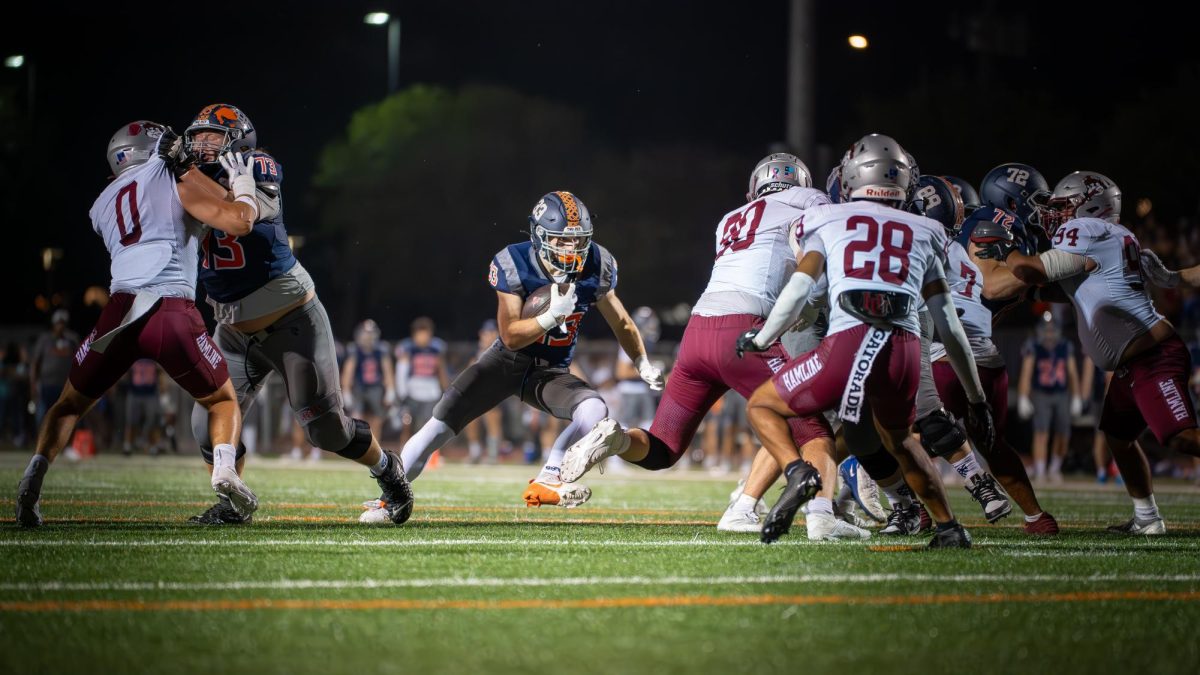We idolize our professional athletes because they amaze us. They amaze us with their gravity-defying jumps and sublime displays of technical skill, showing us the very pinnacle of what the human body can achieve. We pay them millions of dollars, pack arenas and even wear their names on our backs, all in celebration of their gifts and accomplishments. We love them. It is, however, a shallow love, for just as much as we love to revel in their successes do we love to wonder at their most catastrophic failures. The overwhelming mass of (often white) sports fans are always ready to shake their heads in disappointment when a football player (often black) commits a violent crime, in the same way that protective baseball fans delight in the condemnation of steroid-users. Our society’s hyper-focus on and ravenous hunger for these stories is undeniable and under-discussed.
To understand a cultural phenomenon as troubling and complex as this, I’ve identified two goals. First, we need to find the problem areas. Next, we need to pinpoint the underlying causes of and possible solutions to the problem, including occasionally being self-critical of how we can better enact change in the culture of our sports world. This is the first installment of what will be an ongoing exploration of this topic. Each chapter will introduce a problem area, attempt to identify the roots of the problem, and hopefully leave us with a better idea of what we can do to help affect the status quo.
An important way to view our obsession with disgraced athletes is by examining what types of offenses certain fans care about and how they are measured comparatively across different sports and different athletes. In addition to the legal weight that our society gives to different types of transgressions, each league is at liberty to make an independent judgement of severity on a case by case basis, and to establish policies of its own for disciplining members. The policies of the respective leagues rarely, if ever, match up identically with regard to what offenses are considered most heinous, and the causes of those discrepancies are directly tied to each league’s relationship with its fans.
Baseball is America’s national pastime; there could be no more egregious a crime than to defile that staple of American culture with performance-enhancing drugs. Baseball excommunicates steroid users, condemning and diminishing their careers with the proverbial asterisk. These athletes play a game that means something to the history of America, and the very best is expected of them. Protecting our pastime from those despicable cheaters is a responsibility that many baseball fans take great pride in.
Somehow, defiling football with those same illegal supplements isn’t quite as big a deal. PED-related suspensions in football are far less severe than in baseball and are rarely publicized at all. In fact, the NFL just this month agreed to implement testing for Human Growth Hormone for the first time, which the MLB has already been doing for years. The truth may be that PED-related offenses aren’t necessarily as newsworthy to a predominantly white group of fans whose spectator sport of choice is highly violent and highly racialized. Football players engage an incredibly brutal game, and there seems to be a fascination with pro athletes who can’t keep the brutality from spilling into their personal lives. What does it mean when white fans chalk up a player’s violent incident as just another in the long line of troubled black football players, predisposed to violence and unable to control his monstrous tendencies, or at least fend them off until Sunday? It’s important to examine how narratives of pro football players and blackness are portrayed by the media to appease racist fans.
As deplorable and inexcusable as all violent crimes are, they aren’t always reacted to equally. In hockey, we have players committing violent crimes right out on the ice, so the media may not see it as coverage-worthy when the violence spills into their personal lives. When a promising young forward named Patrick Kane beat up a cab driver in 2009, there was nothing more than the obligatory fuss from the media. There were a few stories, he issued a public apology, and it was over as soon as it had begun. Unhindered by this incident, Kane has gone on to become one of the most dynamic and famous players in the NHL, and a staple on the U.S. Olympic Hockey team. In a more extreme example, forward Dany Heatley was charged with vehicular manslaughter in 2003 in an incident that resulted in the death of his teammate, Dan Snyder. Heatley pled guilty to four of the six counts against him, and a first degree vehicular homicide charge was dropped as part of his plea deal. Had that charge not been dropped, and had Heatley been convicted, he would have faced up to 20 years in prison. Instead, Heatley had to leave the NHL for only two years, during which he played professionally in Europe. In 2005, there was a spot waiting for him on the Ottawa Senators. His career continued like nothing had ever happened. Those true stories received a fraction of the coverage that similar or less-severe stories in the NFL get because they don’t do anything special to some fans’ perceptions of hockey players. We’ve seen them punch each other on the ice, after which we only have to wait five minutes for them to be allowed back in the game. The media, and by extension white sports culture, understand and accept hockey players, who are predominantly white, to be potential violent offenders; hey, that’s why they play hockey. Conversely, football, though sometimes equally brutal, features a more masked brand of violence. A football player beating up a cab driver is proof that the violence is not just part of their job, it’s who they are. Those athletes may try to hide it, but eventually the monster inside will show itself. The bigoted fan is always eager to find that proof.
The public exposure of violent athletes as violent people, just like the exposure of baseball players as steroid-users, is hyper-covered by the media to cater to the desires of specific groups of sports fans. The level of punishment that league offices ascribe to different offenses is similarly influenced. It comes from what some fans, though they may be the worst of us, want to see and how they want to feel about it.
It is infuriating that sports fandom is represented by its most backward-thinking and reactionary members. That needs to change.







Amelia Paige • Sep 10, 2019 at 1:29 pm
Thanks for revealing your ideas. Something is that students have a choice between government student loan and a private student loan where its easier to go for student loan consolidating debts than over the federal education loan.
Madeleine Lambert • Sep 5, 2019 at 2:35 pm
I have read some good stuff here. Definitely value bookmarking for revisiting. I wonder how much effort you put to create one of these excellent informative site.